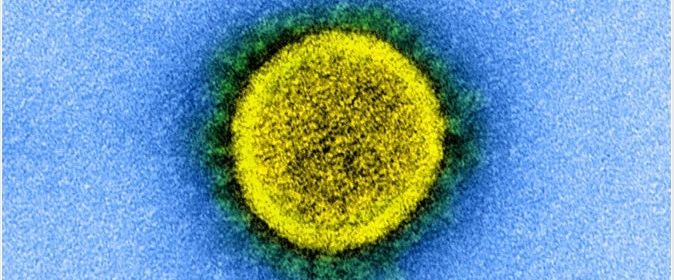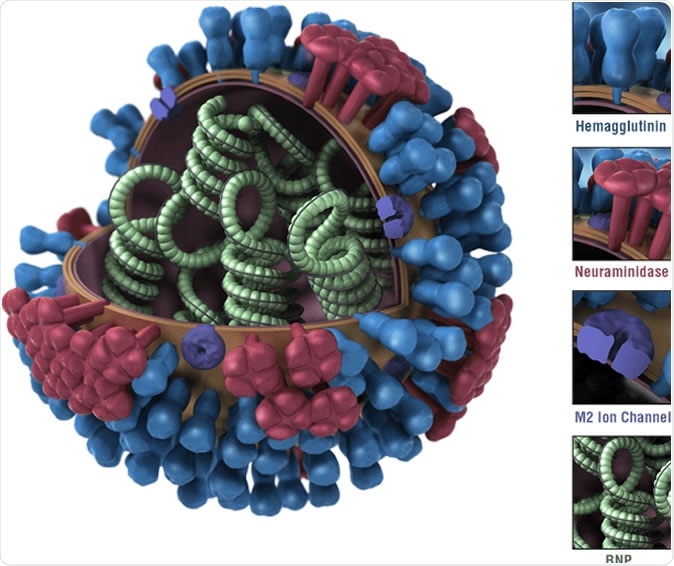What is the Difference Between COVID-19 and the Flu?

Skip to:
- What is coronavirus disease (COVID-19)?
- What is influenza?
- Difference between flu and coronavirus disease
As the coronavirus disease (COVID-19) ravages across the globe, information about the condition is becoming more widely available, thanks to the efforts of various institutions, governments, and scientists from around the world.
Within just a month, scientists identified the virus causing pneumonia-like illness, affecting residents of Wuhan City, in China. Since the first reported case, more pieces of the puzzle have emerged on the nature of the virus, how it behaves, the signs and symptoms, and possible vaccines or treatments for the disease.
Many outbreaks and pandemics in the past had similar symptoms and systemic complications. For instance, COVID-19 and influenza (flu) are both infectious respiratory illnesses. Though the symptoms of these two diseases seem similar, they are caused by different viruses. While many people often compare COVID-19 to the flu, there are many differences between them.
What is coronavirus disease (COVID-19)?
The novel coronavirus first emerged in a seafood market in Wuhan City, Hubei Province, in China late in December 2019. This novel coronavirus now named severe acute respiratory syndrome coronavirus 2 (SARS-CoV-2) was found to cause COVID-19 disease. SARS-CoV-2 belongs to a family of coronaviruses that can cause illness in animals and humans.
There had been several outbreaks of coronaviruses in the past, such as the severe acute respiratory syndrome (SARS) in 2002, and the Middle East Respiratory Syndrome (MERS) in 2012. People around the world commonly get infected with other human coronaviruses 229E, NL63, OC43, and HKU1, which present with mild symptoms.
.jpg)
What is influenza?
The seasonal flu or influenza is caused by contagious influenza viruses that can infect the throat, nose, and, sometimes, the lungs.
The U.S. Centers for Disease Control and Prevention (CDC) notes that influenza can cause mild to severe illness, usually caused by two main types of influenza virus – type A and type B. The influenza type A routinely spread in people, which is responsible for seasonal flu epidemics every year. On the other hand, influenza type B is found only in humans and causes only mild illness.

Difference between flu and coronavirus disease
Symptoms
The first symptoms of COVID-19 and influenza (flu) are similar, wherein patients experience fever and respiratory symptoms, such as cough and sore throat.
With the flu, the most common symptoms include cough, colds, headaches, sore throat, fever, chills, fatigue, muscle aches, and sore throat. Vomiting and diarrhea are usually frequent in children.
In the early stages, COVID-19 has lesser symptoms, which include fever, tiredness, dry cough, red eyes, and in some cases, loss of taste, and smell. Some patients may experience nasal congestion, sore throat, and diarrhea. These symptoms usually worsen gradually. When symptoms progress, the person may experience shortness of breath or difficulty breathing. Those who are at higher risk of severe disease may develop severe illness, characterized by pneumonia, acute respiratory distress syndrome (ARDS), and eventually, multiorgan failure and death.
Both influenza and COVID-19 may lead to pneumonia. While the symptoms are similar in both diseases, the fraction with severe disease is higher for COVID-19. About 15 percent may have severe infections, and 5 percent may need intensive care. The fatality rate of COVID-9 is about 3 percent compared to 0.1 percent in influenza.
Mode of transmission
Both viruses are also transmitted the same way, through droplets from people who cough or sneeze, by touching contaminated surfaces or objects, and through contact with hands.
The viruses can spread from person to person through droplets in the air, but in some cases, COVID-19 might be spread via the airborne route. Meanwhile, both viruses can be spread by an infected individual for days before their symptoms appear.
Incubation period
The speed of transmission is a crucial point of difference between the two pathogens. Influenza has a shorter median incubation period, which refers to the time from contracting the virus to the manifestation of symptoms. It also has a shorter serial interval, which is the time between successive cases. The serial interval of influenza is three days, while COVID-19 is around five to six days, which means the flu can spread faster than COVID-19.
The incubation period of flu ranges between one and four days, while in COVID-19, the incubation period is between two and 14 days. Further, in influenza, people are infected, but not yet sick are significant drivers of transmission, while in coronavirus disease, only 1 percent of reported cases do not have symptoms. This means that the flu spreads faster than COVID-19.
The reproductive number (R0) or the number of secondary infections from one individual is 1.3 in influenza and 2 to 2.5 in COVID-19. This means that COVID-19 is more infectious since an infected individual can transmit the virus to 2 to 2.5 people.
Risk factors
The good news is, there are vaccines for influenza, providing protection, especially for vulnerable populations, such as older adults, pregnant women, young children, people with asthma, diabetes, cancer, HIV/AIDS, and children with neurologic conditions. These vaccines also protect those with heart problems and stroke.
With COVID-19, those at high risk of severe coronavirus disease include older adults, people with underlying health conditions, and those who are immunocompromised. However, worldwide cases thus far show that COVID-19 does not generally cause severe illness among younger individuals and children. The exact reason why children are less likely to succumb to infection is still unknown.
There are effective vaccines and therapeutics for flu or influenza, but at present, there are no available vaccines and drugs for COVID-19. While there are several clinical trials and more than 20 vaccines in development underway for COVID-19, there are no approved vaccines or treatments for the illness.
References
- World Health Organization (WHO). (2020). Q&A on coronaviruses (COVID-19). https://www.who.int/news-room/q-a-detail/q-a-coronaviruses
- World Health Organization (WHO). (2020). Q&A: Similarities and differences – COVID-19 and influenza. https://www.who.int/news-room/q-a-detail/q-a-similarities-and-differences-covid-19-and-influenza
- World Health Organization (WHO). (2020). WHO Director-General's opening remarks at the media briefing on COVID-19 – 3 March 2020. https://www.who.int/dg/speeches/detail/who-director-general-s-opening-remarks-at-the-media-briefing-on-covid-19—3-march-2020
- Pan American Health Organization (PAHO). (2020). Similarities and differences – COVID-19 and influenza. https://www.paho.org/hq/index.php?option=com_content&view=article&id=15760:similarities-and-differences-covid-19-and-influenza&catid=740&lang=en&Itemid=1926
- Johns Hopkins Medicine. (2020). Coronavirus Disease 2019 vs. the Flu. https://www.hopkinsmedicine.org/health/conditions-and-diseases/coronavirus/coronavirus-disease-2019-vs-the-flu
- U.S. Centers for Disease Control and Prevention (CDC). (2020). About Flu. https://www.cdc.gov/flu/index.htm
Further Reading
- All Coronavirus Disease COVID-19 Content
- What Mutations of SARS-CoV-2 are Causing Concern?
- What is the Clinical Impact of COVID-19 on Cancer Patients?
- Can Pets Get COVID-19?
- An Overview of the SARS-CoV-2 Vaccines
Last Updated: Mar 30, 2020

Written by
Angela Betsaida B. Laguipo
Angela is a nurse by profession and a writer by heart. She graduated with honors (Cum Laude) for her Bachelor of Nursing degree at the University of Baguio, Philippines. She is currently completing her Master's Degree where she specialized in Maternal and Child Nursing and worked as a clinical instructor and educator in the School of Nursing at the University of Baguio.
Source: Read Full Article